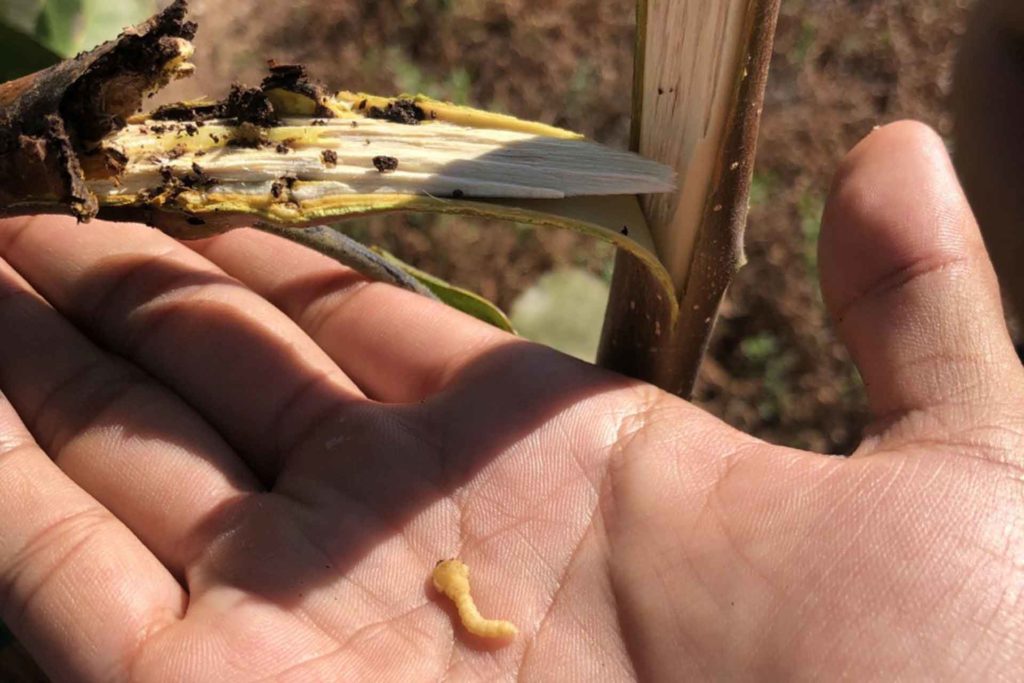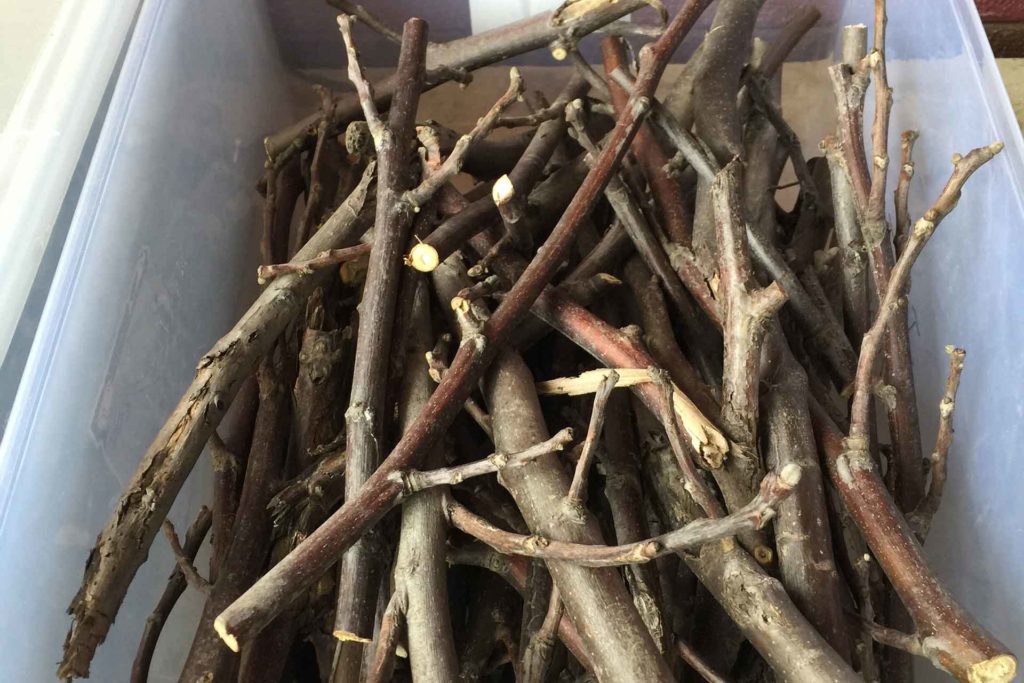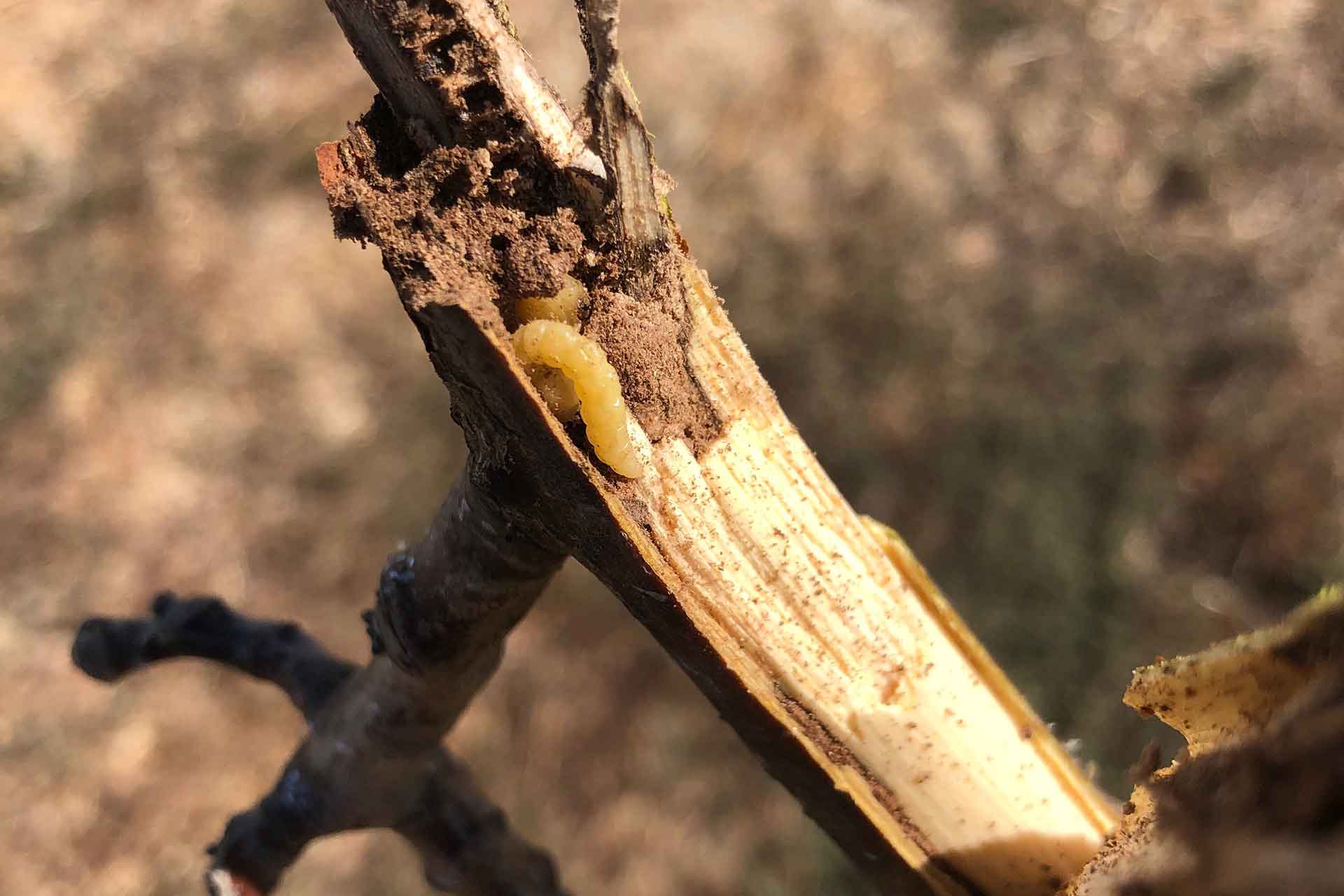It seems that growers are always battling pests in order to protect their crops. While we looked into navel orangeworm and codling moth in the first part of this two-part series, this second part shines the light on walnut husk fly and the Pacific flatheaded borer. So just how concerned should a walnut grower be about these pests? They don’t require equal interest, as one is more of a concern than the other.
Walnut Husk Fly
About the size of a housefly, and far more colorful, the walnut husk fly has one generation per year, in which female flies lay eggs beneath the surface of the walnut husk. The first sign of infestation is a point-sized, stinglike mark on the husk. And while it might initially be an easy miss, the husk will eventually show black marks as the eggs hatch and the maggots feed and destroy it. After feeding, the maggots drop to the ground, where they bury themselves inches below the surface, and pupate in the soil. While most will emerge as adults the following summer, some can remain in the soil for up to two years.
Walnut husk fly is a notable pest, but there are others that surpass it in terms of infestation and damage. Orchards that experience this pest are likely to see it every year. Even though most California walnut-growing regions have walnut husk fly infestation, not every orchard has it. The damage is often overlooked because of how the fly damages the nut—only in the husk. The nutmeats are generally protected and undamaged, but shells often show staining, which is a problem more for those who sell walnuts in-shell. However, moldy or shriveled kernels can be the result of infestation occurring early in the season.
“The practices that are in place can help keep walnut husk fly damage low, and the need for multiple insecticide use within the season has potential consequences that include cost and impacting the natural enemies in the orchard,” says Jhalendra Rijal, PhD, Area Integrated Pest Management Advisor. This basically comes down to using insecticide that includes bait, which attracts the fly to feed on the very chemical that is designed to control adult flies before they can lay eggs. With proper timing, eggs laid within one month prior to harvest will not have time to mature.
There has been some discussion in the last two to three years about whether or not soils can be treated to prevent pupating insects from emerging. There’s also been mention of alternative methods, like winter soil cultivation, wintertime insecticide options, or biologicals such as insect pathogenic nematodes, but these have ultimately not yet come to fruition. “It seems to be difficult, because the pupae are very well protected within the pupal case, and below a few inches of ground,” explains Rijal. With this being the case, more research is needed on these practices to ensure their safety and efficacy.
The walnut husk fly is identified by its signature dark-banded wings, bright yellow spot near the wing attachments, and greenish eyes.

Pacific Flatheaded Borer
On the other end of the spectrum is a pest that holds the attention of researchers and growers alike due to its sudden increase in numbers and damage. The Pacific flatheaded borer has a particular attraction to damage or injuries on trees, from sunburn or canker, to pruning cuts, freeze damage, or any other kind of wound.
This beetle lays its eggs in these damaged parts, and the larvae will bore tunnels beneath the bark and deep into the wood of the tree, where they pupate. When the weather becomes warmer, adult beetles emerge. This causes extensive damage to the tree, causing parts of mature trees—or entire younger trees—to die.
“Last year was a widely-spread issue, and this year seems to be a little more of a problem in certain areas,” says Rijal. “A critical factor found this year was significant damage found to the younger walnut trees in several orchards, in addition to mature orchards.”
While observing two walnut blocks of trees under two years old, Rijal found 100 percent of them with Pacific flatheaded borer damage, for a total of 350 acres. Another orchard of trees planted just this year was entirely infested with the pest, making the grower consider grafting every single one of his trees below the infestation damage in an attempt to save his orchard.
In observed trees that were six to seven years old, Rijal discovered borer damage everywhere on the plant, not just the wounded areas, including the trunks, branches, and smaller limbs and twigs, and internal parts of the tree that had little to no sun exposure.

While it’s known by researchers that something happened to cause the sudden increase in Pacific flatheaded borer populations—possibly including the previous drought years—it’s still unclear what the deciding factors were. With help from the Walnut Board of California funding this year, researchers might now have more of a lead on the borer’s previously unknown cycle.
Winter-prunded infested branches were collected and placed in plastic tubs, which were then placed outdoors, where they received all natural light and temperature. Rijal waited for adult emergence. At the first week of May, adult beetles began to emerge and continued through June. “Knowing the borer’s adult emergence—something we didn’t know before—was new to this year’s research,” says Rijal. “We are also testing a few trap types to capture adult beetles. If found effective, we hope that growers will be able to use these traps for flatheaded borer monitoring.”
As more is discovered about the Pacific flatheaded borer, growers are encouraged to implement and maintain what are current best practices for preventing or curbing infestation. Removing infested branches is the most important step a grower can take to reducing damage from infestation. “I’ve seen trees that have infestation everywhere, so you can’t get it all,” says Rijal, “but in whatever way you can remove infested branches, especially from mature trees, it can help a lot.”
White latex paint applied to the trunks of trees to prevent sunburn can also help prevent the borer, since this pest is attracted to sunburn damage.
Latex painting and removing infested branches are the two best things growers can do while insecticides, chemical application timings, and other methods are being developed or researched in order to combat Pacific flatheaded borer. These practices will remain critically important until better tools become available.
The Pacific flatheaded borer has one generation per year. As a larva, it has an enlarged, flat area behind the head, and is light-colored. As a beetle, the body is a dark bronze with copper spots on the wings.











